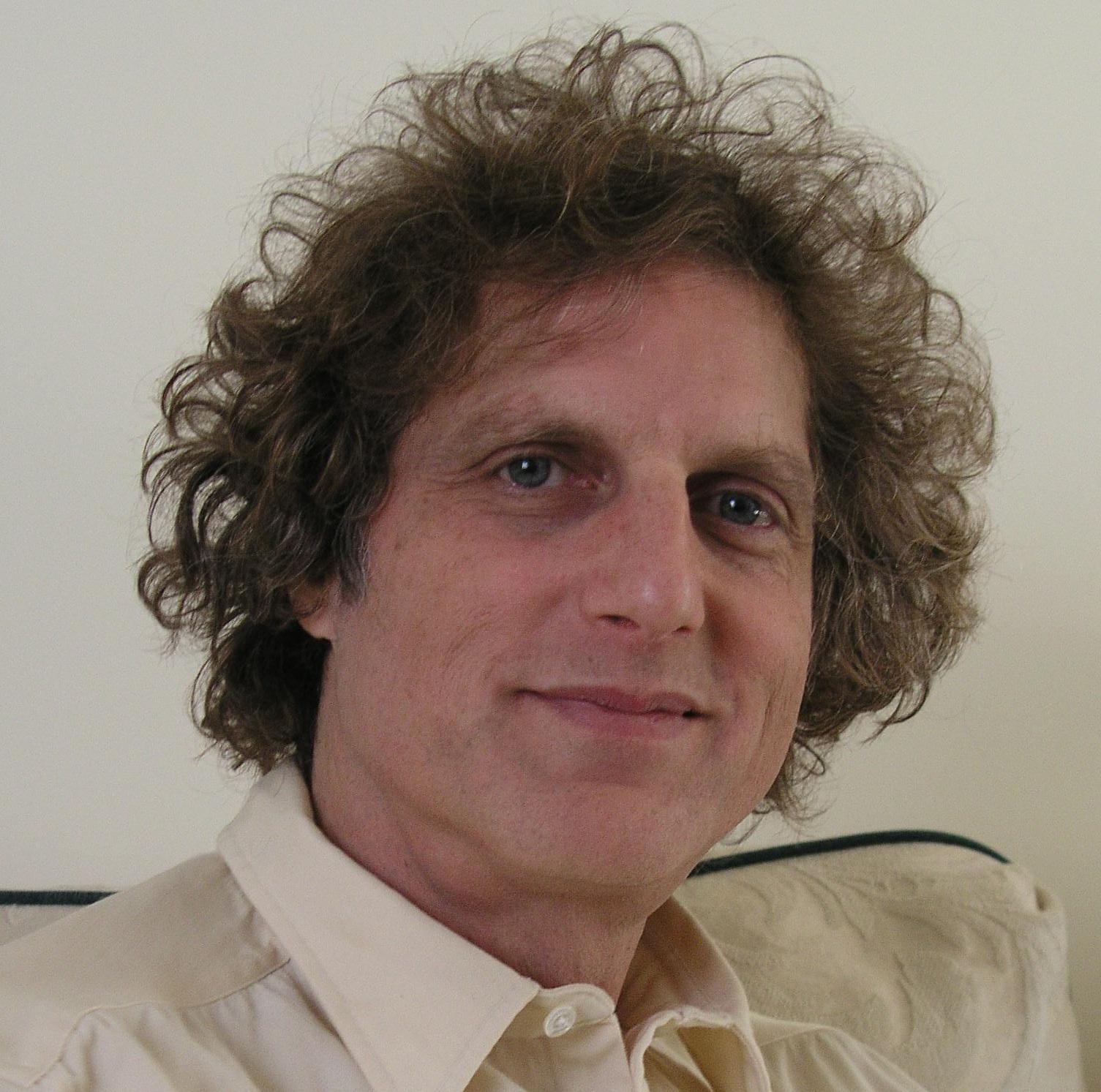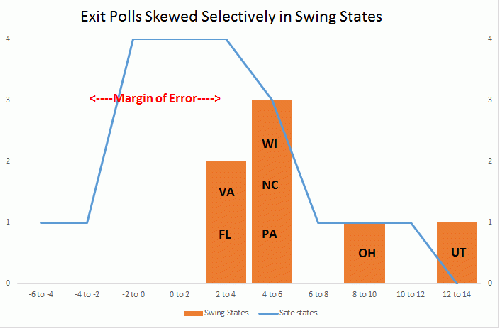In the context of all that has gone before, I am inclined to believe that the election was stolen for Trump by the same Republican operatives who have been stealing elections since the computerization after HAVA. But the evidence in this case is not as overwhelming as it has been in some past elections. The best case for electronic election theft is the fact that the exit poll discrepancies favoring Clinton are larger in just those swing states which were critical for Trump's victory. This is a clearly visible, but not striking effect.
This chart, too, comes with footnotes--esoterica of interest only to the exit poll afficionado. It happens that two crucial states for Trump are spread across two time zones. Both Michigan and Florida are mainly on EST, but a piece of the panhandle and a sliver of the Upper Peninsula are on CST. In deference to those small areas, the news services delay their exit poll announcements until an hour after most of the polls are closed, and local returns have been reported from a sizable piece of each state. Above, I described how reported "exit poll" numbers are progressively adulterated with official counts as the evening wears on. The upshot is that we don't have access to unadjusted exit polls for Florida and Michigan, and we might suspect that the raw numbers favored Clinton more than the numbers which we have been allowed to see. The outsized disparity between early voting and election-day voting in Florida is another cause for suspicion of the Florida count.
Of course, the perennial vote suppression machinery was out in force this year, and even more devastating than usual because Clinton's support was tepid, and she relied heavily on Democratic strongholds. It is clear that, but for vote suppression, the election would have gone to Clinton. On the other hand, the usual media bias which had lent gravitas to G. W. Bush and Ronald Reagan in the past was not working for Trump. Even the genetically Republican news organs would did not offer Trump a full-throated endorsement.
The Recount
Hillary Clinton was made aware of the evidence that she had been cheated of a victory, and that a recount might yet overturn the election; but like Gore and Kerry before her, she was uninterested in taking a stand for election integrity, even when her political future hung in the balance. Jill Stein was the Green Party candidate, nominally with 1% of the vote, but polls suggest she may have received much more. Stein was approached by election integrity activists and apprised of the indications of foul play, as well as the generally dysfunctional state of vote counting in America. As a candidate, Stein had standing to challenge the vote, and as an outsider, she was freer to risk taking a principled stand, in defiance of the media and both political parties.
On the day before Thanksgiving, with just two days left before a Wisconsin filing deadline, Stein posted on her campaign web page a crowd-funded bid to recount the votes in Wisconsin, Michigan and Pennsylvania. (Florida was omitted, despite evidence that it was a major locus of irregularities, and the existence of paper ballots that might, in principle, be recounted, because state law in Florida makes any challenge to the vote count impractical.) Immediately, thousands of small pledge began pouring in to the Jill2016 web site, sustaining for several days at more than $200,000 per hour. No one was more surprised than Stein herself. The web site raised $7.3 million, which went for filing costs in three states and an upscale legal team, averaging $600/hr.
In Wisconsin, where the last statewide hand recount cost $700,000, the state demanded a $2 million deposit, then $3.2 million, then $3.9 in small bills. (Literally, individual contributions were limited to $2700 each.) After the Greens met the demand, the State Court decided that it had no power to compel individual counties to count votes by hand. And indeed, most Wisconsin counties went through the motions of a meaningless re-run of the same computer programs that produced the original totals.
Michigan had reported a 10,000 vote plurality for Trump, but there were 75,000 "undervotes". These were ballots on which the op-scan machines were unable to detect a vote for president. The undervotes were concentrated in heavily-Democratic areas of Detroit. 600 precincts were identified where the number of recorded votes failed to match the number of signatures on the register, and a legal loophole permitted the presiding judge to specify that no recounts could occur in these places. A later judicial ruling halted the Michigan recount altogether.
I live in Pennsylvania, where 80% of the population votes on equipment that carries no memory of their individual votes, no paper ballots and no audit trail. There is literally nothing to recount. Why did Stein even bother with Pennsylvania? In Philadelphia (84% Clinton), tens of thousands of voters were shunted to provisional ballots, and most of those were eventually disqualified, and never counted. But the Court has ruled that the recount did not extend to a reconsideration of ballots that were disallowed the first time. The (Democratic) Election Commission has declined to make the provisional ballots public, or even to offer a statement about how many there are. The Election Commission also refused a request to inspect the State seals over memory chips that are supposed to guarantee physical integrity of the voting machines.
In the end, what we learned was how fiercely the Republicans and Democrats resist granting access to the ballots that might reveal whether votes are being accurately tallied. Meanwhile, the press has reported the that the recount ended in an anticlimax, with no discrepancies uncovered.
Post Script: Why is this a taboo topic?
How is the consensus maintained that it is appropriate for the "world's greatest democracy" to rely on proprietary, secret software to count votes without the possibility of inspection or challenge by the public?
Why have mainstream journalists ignored this issue? Why are Democratic party leaders so reluctant to reform a system that seems to be tilted against them?
Perhaps the unusual confluence of events in 2016 has created an opening for public discussion of deep questions about American democracy for the first time in a dozen years.
(Note: You can view every article as one long page if you sign up as an Advocate Member, or higher).






